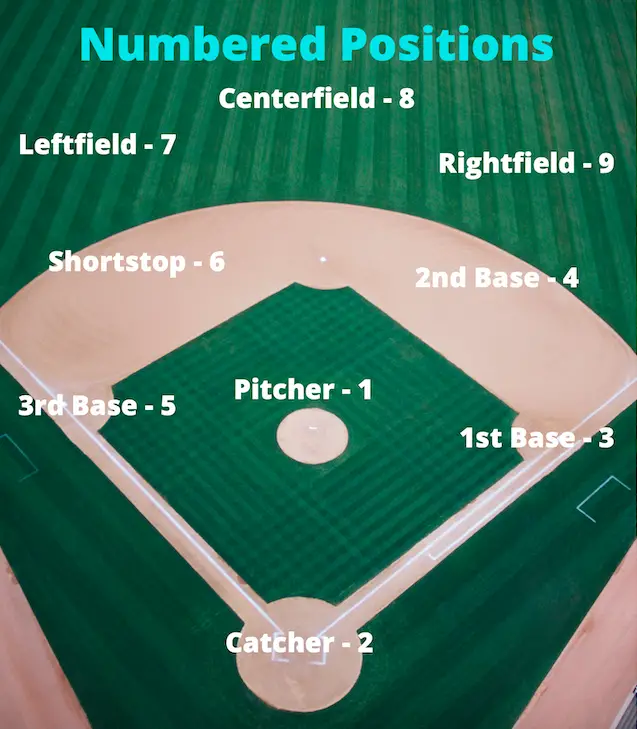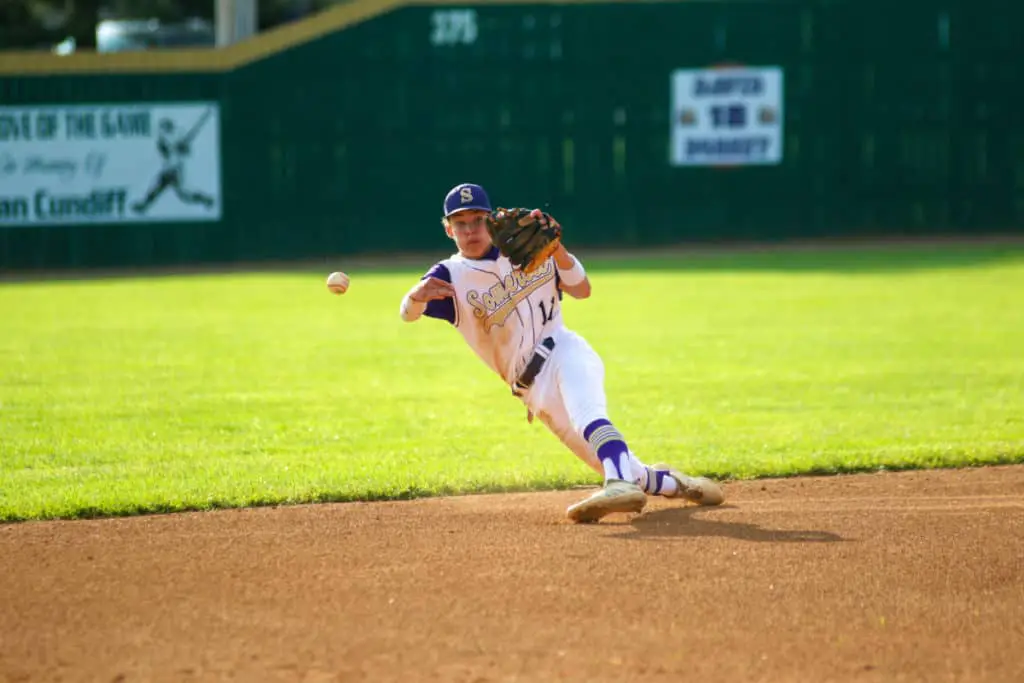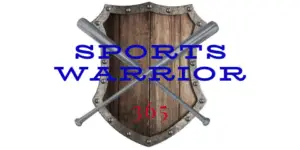Baseball has 9 different positions ranging from the catcher, to the pitcher to infielders and outfielders. They each have different roles and responsibilities. Overall, baseball is a slower paced game where all fielders have to be ready on every pitch that takes place.
Baseball might seem confusing at first, but we are here to help and have written plenty to help the everyday fan understand and appreciate the great game of baseball.
What Is A Shortstop in Baseball?
The shortstop plays in the infield between 2nd base and 3rd base. The main role is to field any ground balls hit into that area, field it and make an out that is available. They also have the role of taking cutoffs and being the leader in the infield. Typically, the shortstop is a talented player with soft hands, a wide range and a strong arm.
5 Key Roles of the Shortstop in Baseball
- Fielding ground balls hit in their area
- Fielding infield fly balls hit in their area
- Taking cutoffs on base hits into left field or center field
- Covering 2nd base on stolen base attempts
- Covering 2nd base on any ball hit to the right side of the infield or pitcher with a runner on 1st base

Role #1: Fielding ground balls hit in their area
With the shortstop positioned in the infield, they will field any ground balls hit into their area. This is the most common thing a shortstop will do. They must possess range (ability to get to many ground balls) and have a strong arm (make a successful throw across the diamond).
Shortstops will work on their range and having “soft hands.” If a shortstop fails to field the ground ball on a routine ground ball they are marked for an “error.” A shortstop that fields a higher percentage of routine ground balls and can go get a ball in the “hole” is a pitchers best friend!
Role #2: Fielding infield fly balls hit in their area
The shortstop is the captain of the infield and when a ball is hit between multiple players on the infield, the shortstop is expected to take charge and make the play. They are often the most talented infielder, which might be the reason they are in charge and can call off anyone on an infield fly ball. For the most part, this play is rather routine. The most difficult fly ball is the ball hit into the shallow outfield between the infielders and the outfitters. The best shortstop, like Omar Vizquel, is really good at getting to these in-between fly balls and making over the shoulder catches.
Role #3: Taking cutoffs on base hits into left field or center field
The shortstop is the main cutoff for all throws heading to 3rd base and for throws headed to 2nd base from left and center field. He or she must align themselves in a straight line between the fielder and the base. This takes some practice to line up properly and to communicate with your other teammates. At the Little League level they are often the cut off on plays to home plate as well, but as players advance up to higher levels the 1st baseman or 3rd baseman will take the cutoff home depending on where the ball is hit in the outfield
Role #4: Covering 2nd base on stolen base attempts
When a lefty hitter is up to bat and someone attempts to steal 2nd base, they will cover on the pitch. They must catch the ball and attempt to tag the runner out prior to him reaching the base. This skill requires being able to run, catch and tag in a small amount of time. If the ball is hit in their previous location, they must head back and try to field the ground ball. There is a lot going on when this happens.
Role #5: Covering 2nd base on any ball hit to the right side of the infield with a runner on 1st base
When there is a force play at 2nd base (runner on 1st base at time of pitch), the shortstop is responsible for covering the base on any ball hit to the 2nd baseman, 1st baseman, or pitcher. The first responsibility is to catch the ball, get the force out at 2nd base and then try to turn a double play by throwing it to first base before the batter reaches 1st base. This takes talent and some great footwork to make a strong accurate throw after recording the first out at 2nd base.

Most Important Skills for a Shortstop
- Soft hands to field ground balls
- Strong arm with a quick release
- Field awareness to be in the right positions
- Great communicator with other fielders
- Ability to make complex plays
The shortstop is set up where there is a lot of responsibility and overall skill that it takes to play the positions. It requires plenty of range and the ability to make a strong, quick throw often times all the way across the infield. The shortstop has to be aware on every pitch and ready to make the best possible play for the team.
In our ratings, we have it rated as the 3rd most difficult position in the field behind catcher and pitcher. To see our full ratings list, check out this link!
Shortstops are usually quick, fast, with a strong arm and plenty of awareness. They have the ability to go get a ball hit into a hole. They have to be ready for the ball hit just slightly over their head and turn their back to the plate, run hard and make the over the shoulder catch.
The amount of responsibility makes playing shortstop fun and one that takes plenty of athletic ability and skill.
Overall, the shortstop is active and is highly involved in the game. They play a vital role in making key plays. At the Little League level, the most athletic player with the highest rated infield skills will more than likely play shortstop. It is a key position for any team that wants to win games.
Helpful Video on Becoming A Better Shortstop!
Best Shortstops In MLB History
- Ozzie Smith
- Omar Vizquel
- Cal Ripken Jr.
- Derek Jeter
- Barry Larkin
- Honus Wagner
- Robin Yount
- Ernie Banks
- Alex Rodriguez
Some of these shortstops are on here for a variety of reasons: ability to play great defense, ability to hit the ball compared to other shortstops, or a combination of hitting and fielding. For many years, shortstop ofen were some of the weakest hitters on the team, but that has changed in recent decades with players like Deke Jeter, Alex Rodriguez and Cal Ripken Jr. They can hit the ball, field the ball and be great leaders on their teams!
What position number is the shortstop?
The shortstop is position number 6 for scoring purposes.
Here is a complete post on the numbering structure in baseball.
